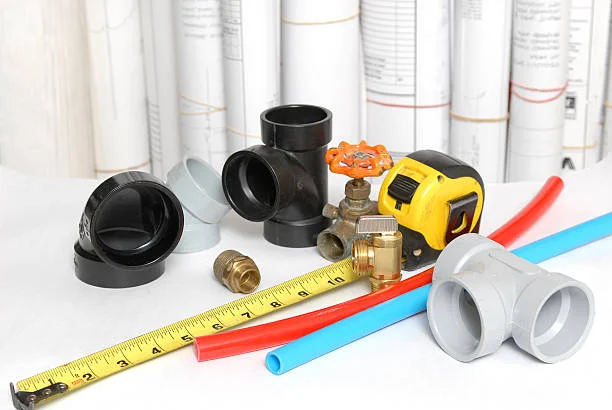How to Identify HDPE Pipe Quality

How to Identify HDPE Pipe Quality?
The performances of pe pipes are up to staple, processing equipment, and technology. plenty of manufacturers add recycled material into the pipe to scale back the prices and gain higher profits, however, which greatly reduces the performance of the pipes. a way to identify the standard of HDPE pipes? We introduced the 7 ways to test it:
1-Appearance:
Good quality pipes, the inside and outside surfaces of the PE pipes are smooth, without defects like bubbles, dents, impurities, etc.
2-Milling strips
The strips of qualified pipes milled by the welding machine are bright in color, and not easy to break with repeated folding. The milling strips with whitish color, or other colors, are caused by adding recycling material or uneven material mixing.
Good Quality pipes: the milling strips are bright in color, neat, no break with repeated folding.
3- Butt Welding Joint
The qualified butt welding joint should have smooth and symmetrical turnups around the pipe circles, and also the turnup depth mustn’t be below the pipe surface.
The alignment tolerance at two sides within the excircle of welding seams shouldn’t be quite 10% of pipe thickness. The turnips should be solid and smooth, the underside part could be a bit wider.
There should be no impurities, small holes, deformation, or damage at the downside of turn-ups.
4- Smelling
5- Burning flame
6- Break Elongation
The break elongation is the ratio between the length when it had been broken and the origin length. The larger the break elongation and also the better flexibility, and better performance.
Good Quality pipes: 3.5 times of original length without breaking.
7- OIT
OIT(Oxidative induction time) is the time for the pipes to possess an Automatic catalytic oxidation reaction under higher temperatures and oxygen, which may indicate the thermal degradation capability of the pe pipes during processing, storage, welding, and dealing. The longer the OIT, the higher the anti-aging capability of PE pipes.
NEWTECH-Pipes is a Leading Pipe manufacturer in Pakistan and one of the fastest-growing pipe industries in Pakistan. Our services in Pakistan are remarkable among the other pipe manufacturing industries in Pakistan.
Our goal is to provide all types of pipe and fitting services all over Pakistan. We deal in high-quality pipes and fittings including HDPE Pipes, PVC, PPRC, MDPE & ELECTRIC CONDUIT Pipes, and Fittings according to ISO 9001-2015 standards.
Our services in Pakistan are remarkable among the other pipe manufacturing industries in Pakistan. Our goal is to provide all types of pipe and fitting services all over Pakistan.

Ensuring the quality of HDPE pipes is paramount for the reliability and efficiency of any piping system. With the guidance provided on how to identify HDPE pipe quality, including visual inspections, bend tests, and assessments of welding joints, customers can make informed decisions when selecting pipes for their projects. At NEWTECH-Pipes, we prioritize excellence in manufacturing, adhering to ISO 9001-2015 standards to deliver high-quality HDPE pipes and fittings across Pakistan. With a commitment to durability, performance, and compliance, we aim to serve as a trusted partner for all piping needs, contributing to the development of resilient and sustainable infrastructure nationwide.
Frequently Asked Questions About HDPE pipe quality
Q1: What is HDPE, and why is it important to identify its quality?
A1: High-density polyethylene (HDPE) is a durable material commonly used for pipes. Identifying HDPE pipe quality is essential to ensure the longevity and performance of your piping system.
Q2: How can I visually assess the quality of an HDPE pipe?
A2: Inspect the pipe for visible imperfections such as cracks, bubbles, or discoloration. High-quality HDPE pipes should have a smooth, uniform surface.
Q3: Are there specific markings or labels to look for on HDPE pipes?
A3: Yes, quality HDPE pipes typically have markings with manufacturer information, relevant standards (e.g., ASTM), and the material designation (e.g., PE4710).
Q4: Can I perform a simple bend or flexibility test to assess HDPE pipe quality?
A4: Yes, gently bend the pipe. Quality HDPE pipes should bend without breaking or showing excessive rigidity. Inferior pipes may crack or resist bending.
Q5: What is the significance of the pipe’s diameter and thickness when assessing quality?
A5: The diameter and thickness of the HDPE pipe should meet the specified standards and requirements for your application. Deviations can indicate subpar quality.
Q6: What is the role of certification and compliance in identifying HDPE pipe quality?
A6: Certification and compliance with recognized standards, such as ISO, ASTM, or industry-specific standards, are strong indicators of quality. Ensure the pipe meets these standards.


